Wooden blinds for window frames are used for several purposes. These include privacy, light control, and adding elegance. But before moving forward, first understand how to clean faux wood blinds. If done correctly, cleaning wooden blinds can result in spotless cleaning.
Several families think they know everything regarding how to clean faux wood blinds. While others believe they do not have any idea how to clean wood blinds.
While many people consider it a tedious task, in reality, cleaning wooden blinds is not as tough. All you have to do is figure out how to clean faux wood blinds first. Knowing the right techniques and tools may help you get started with the process of cleaning wooden blinds.
Difference Between Faux and Real Wood Blinds:
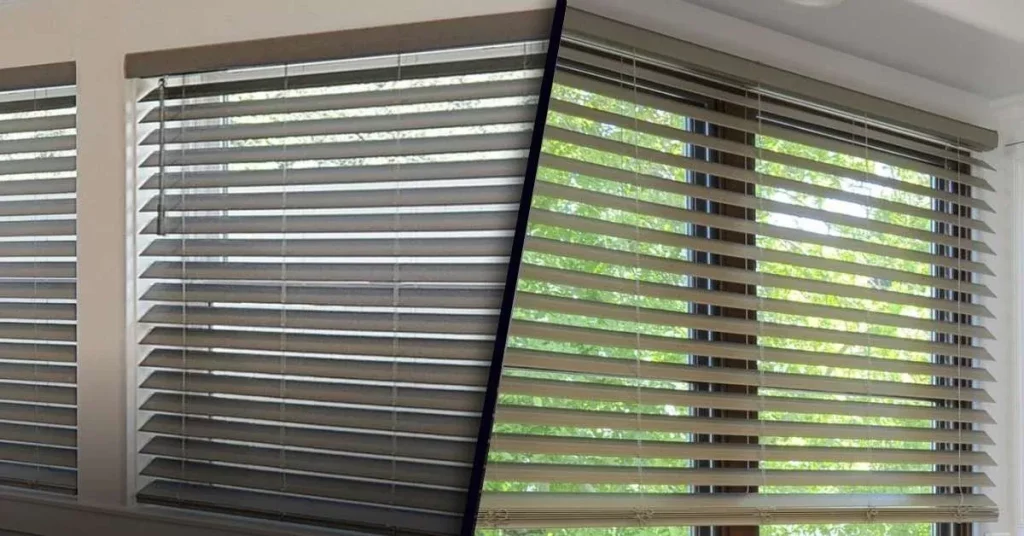
When comparing faux wood blinds with real wood blinds, both may appear similar. Faux wood blinds are made of timber with an intimate appearance. These are easy to maintain, affordable, and moisture resistant. Below are the key reasons to know how to clean faux wood blinds safely and effectively for homeowners.
Things you will require for Cleaning Wood Blinds:
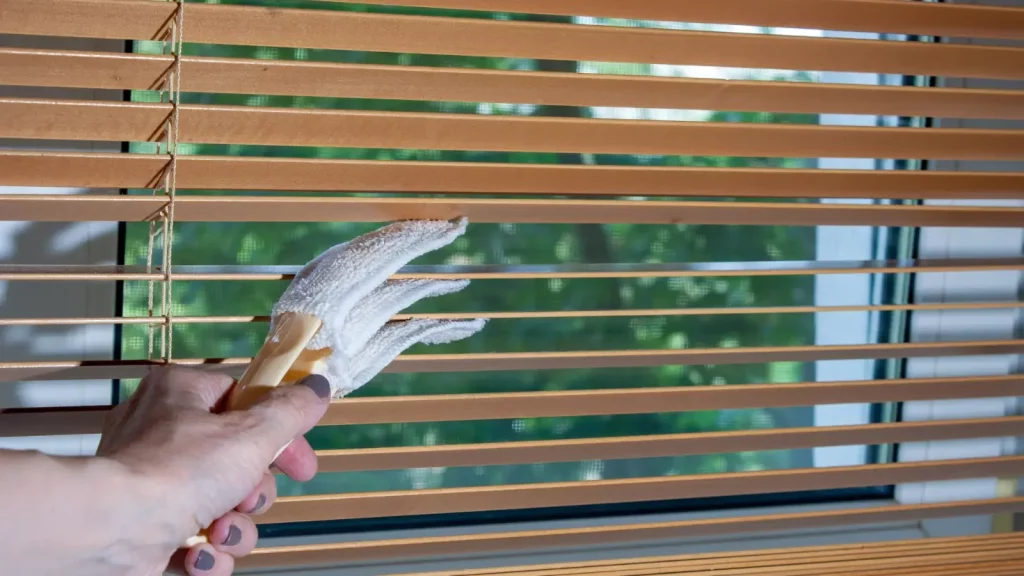
To know how to clean faux wood blinds effectively, you may need the following things:
1. Soft Microfiber Dusters or Cloths
If you want to discover how to clean faux wood blinds, then the first way is to use a lint-free and soft microfiber duster or a cloth. It is best for wiping and dusting down the blinds without leaving a scratch on the wood. If you want to know how to clean wood blinds effectively, this method is considered the best. A duster is a flexible and long-reaching tool for cleaning wooden blinds, efficiently removing the dust between the slats.
2. Brush-Attached Vacuum
Another easy way to clean faux wood blinds is by using a brush attached to a vacuum. You can clean window blinds by removing particles of clinging dust.
3. A mild soap:
For effectively cleaning wooden blinds, you can also use a mild soap. The easiest way to clean faux wood blinds is to use a gentle soap without damaging the outer surface of the blinds.
4. White vinegar:
For faux (PVC) blinds, white vinegar is an excellent choice for cleaning wooden blinds. However, for wooden blinds, it is not encouraged. But if you intend to use the easiest way to clean faux wood blinds, then mix it with water.
5. Cotton gloves:
Using cotton gloves is also one of the easiest ways to clean faux wood blinds, preventing its dust from scattering. You can use them for cleaning wooden blinds quickly.
6. Spray bottle:
To avoid warping or water damage, wooden blinds require gentle cleaning. A spray bottle for this purpose is the easiest way to clean faux wood blinds in a moisture-controlled environment. Thus, it effectively removes the dust and grime.
7. Lint-free towels
To minimize fiber or particle shedding, use a low lint or lint-free product, such as lint-free wipes or a lint-free cloth. While learning how to clean wood blinds effectively, this is something very important. Conventionally, these products comprise tightly or non-woven, specially engineered materials, restricting loose fibers from releasing.
Hence, these are considered one of the easiest ways to clean faux wood blinds. Thus, without leaving residue behind, they help maintain a spotless finish.
Step-by-Step Cleaning Process
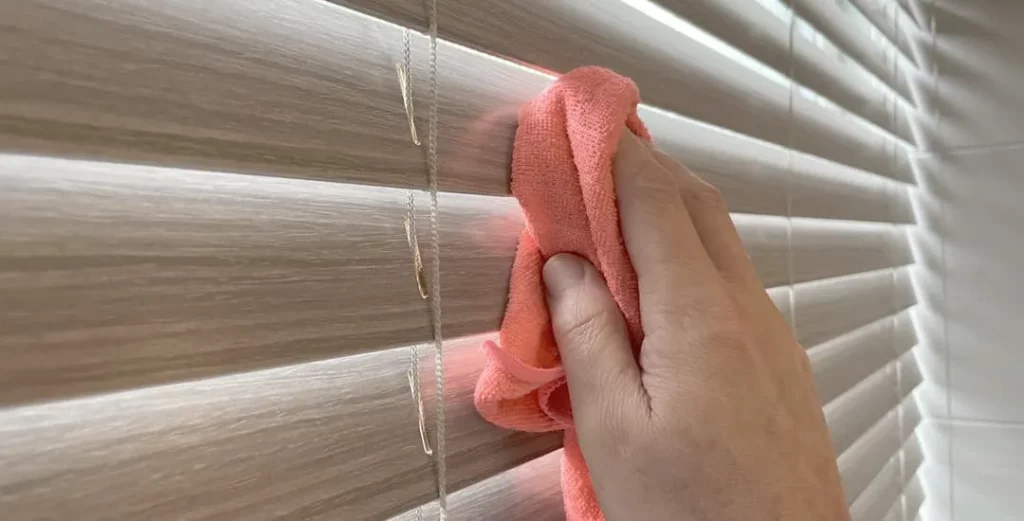
These are the step-by-step processes to effectively clean wooden window blinds:
1. Dusting Wood Blinds
The easiest way to clean faux wood blinds is to keep them away from debris and dust. For this purpose, use a feather duster or a dry microfibre cloth. In one direction, close the slats and sweep lightly by moving downwards. On the other hand, for people wanting to know how to clean wood blinds with precision, they should wear cotton gloves and run their fingers along each slat. This may appear as incredibly effective while removing the dust, gently attach the vacuum with the brush.
2. Deep Cleaning
For cleaning wooden blinds deeply, you need warm water containing a magic eraser and a little dish soap. Gently wipe the slate one by one and remove dirt, buildup, and dust. This process is known best way to clean wooden blinds without damaging anything. Deep clean your blinds in the same way every 2-3 months to maintain their best appearance.
3. Spot Cleaning
If you wonder how to clean wood blinds, particularly if you want to remove sticky and stubborn stains, by gently rubbing with a damp sponge or cloth. But while doing so, avoid soaking the wood too much. The best way to clean wooden blinds is to be thorough and gentle yet thorough, particularly if you are dealing with real wood surfaces. For faux wood blinds, add diluted detergent and lukewarm water. However, do not rub it too harshly, or you may affect the varnish or the paint on your blinds.
4. Hardware and Cords Cleaning
Similar to the blinds, the strings attached to them also catch dust. Hence, when exposed to bright sunlight, they can lose color quickly. As part of the best way to clean wooden blinds, use a fabric cleaner, a microfiber cloth, and warm water to gently clean them from top to bottom.
Dos and Don’ts of Cleaning Wood Blinds
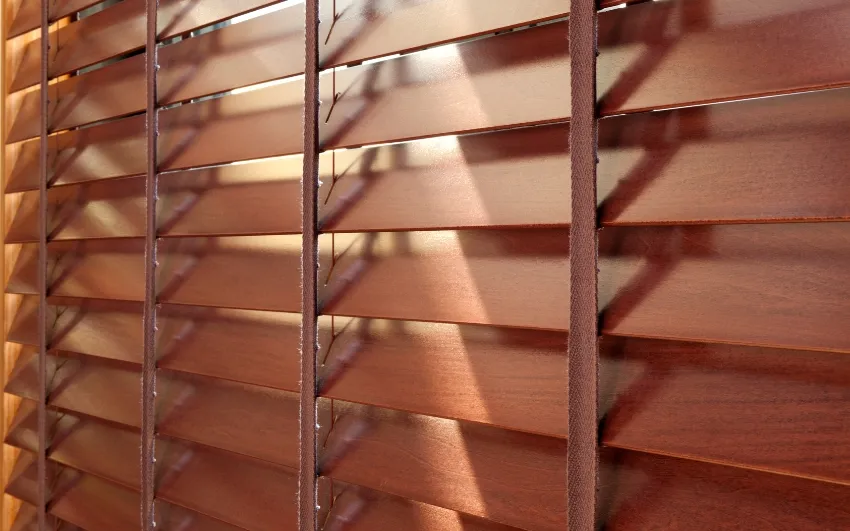
For the best way to clean wooden blinds, follow these essential dos and don’ts:
Do’s
- Use a feather duster or microfiber cloth to frequently dust wood blinds to avoid accumulation.
- Make use of mild cleaners or wood solutions composed of dish soap and water for effective spot cleaning.
- Test on a small or non-prominent area before solution application. This ensures it does not affect the wood finish.
- Once cleaning is finished, dry out the blinds completely, preventing water damage or warping.
Don’ts
- Avoid using ammonia-based cleaners, abrasive materials, or harsh cleaning chemicals that may affect the finishing of wood.
- Do not soak the wood blinds with liquid cleaners or water. Otherwise, excessive moisture may result in staining or warping.
- Avoid applying extra pressure or force during cleaning to prevent damaging or bending the fragile slats.
- Ignoring regular maintenance and cleaning can result in grime accumulation and damage.
Additional Tips for Long-Term Care
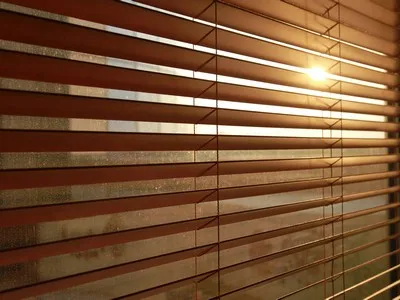
If you are searching for extra tips regarding long-term care for wooden window blinds, these are as follows:
1. Avoid direct sunlight to prevent fading:
Try UV protectant spray to ensure the freshness of wooden blinds. This way, it can block harsh sunlight. To limit the direct exposure to the sun slightly, you can also slightly tilt the blinds. If the sun shines too much over time, it may make the appearance worn out and dull their natural color.
Noticed a squeaky sound when opening or closing them? That’s probably due to friction in the moving parts. A quick fix and regular dusting can go a long way. One of the best ways to clean wooden blinds and extend their life is to stay ahead of dust buildup before it turns into real damage.
2. Use a wood conditioner occasionally for shine
One of the best ways to clean wooden blinds is to maintain their shine by applying a small quantity of wood conditioner. These include commercial products such as olive oil mixed with vinegar, every 3 to 6 months. Gently buff with a microfiber cloth to prevent drying and restore luster. To avoid excess oil to prevent dust buildup, always test on a hidden area first.
3. Check for damaged cords or loose slats during cleaning.
Check for loose slats (tighten screws or rehang if needed) and frayed/damaged cords (replace to prevent safety hazards). Fixing minor issues early prevents costly repairs and ensures smooth operation. Regular checks extend the blinds’ lifespan and maintain their appearance. A quick look saves trouble later!
Common Mistakes to Avoid When Cleaning Wood Blinds
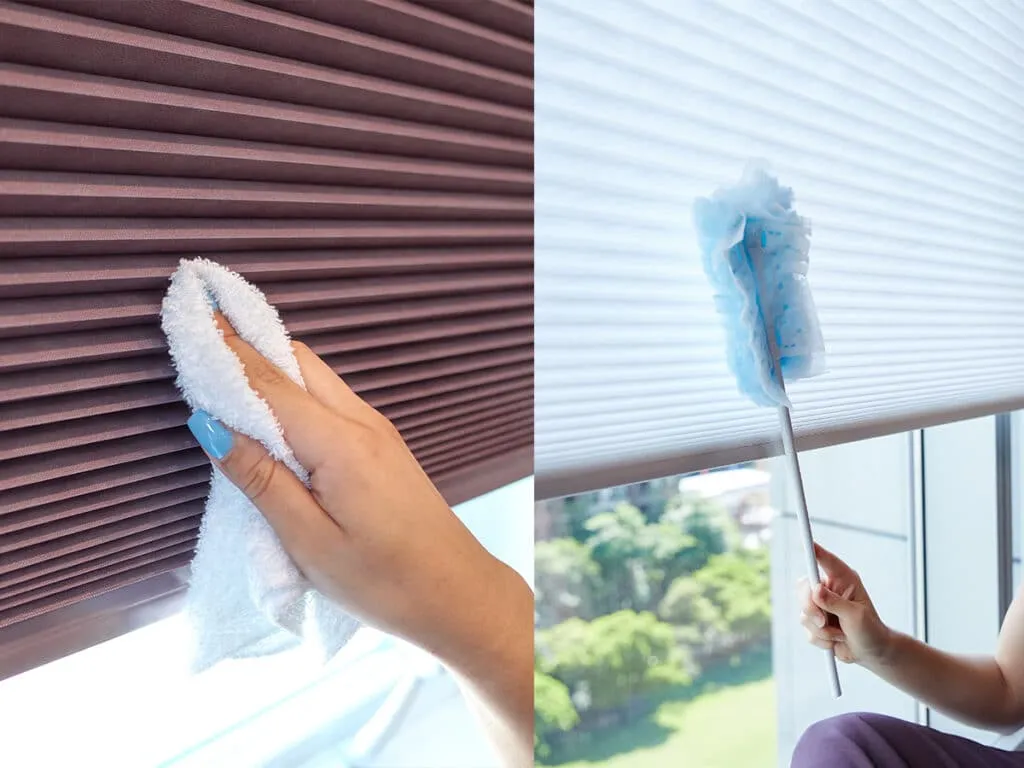
Although you are familiar with how to clean wood blinds, mistiming a few steps may adversely affect the result. These are some of the mistakes to watch out for while keeping in ideal shape:
1. Soaking the Blinds in Water:
Even if it may appear as a quick solution, immersing blinds in water may result in discoloration, warping, or swelling. Real wood, particularly, does not like spare moisture. Instead, consider using a light, wet cloth and immediately wiping your eyes afterwards.
2. Using vinegar on real wood blinds
Even though for several surfaces vinegar is a preferred choice as a cleaner, however, for real wood it is not the same. Because of its acidic nature, it can damage the surface and strip the finish away. If you are wondering how to clean wood blinds properly, choose vinegar only for faux wood blinds.
Conclusion
To improve privacy, elegance, and light control, wooden blinds play a crucial role. But for this purpose, you need to ensure effective care. But cleaning them is not difficult with gentle deep cleaning, avoiding extra moisture, and regular dusting. In that case, it is necessary to use a microfiber cloth and mild soap for spot-cleaning the stains. Inspect for loose slats or frayed cords, ensuring longevity. With simple techniques and tools, maintaining pristine blinds is rewarding and effortless.